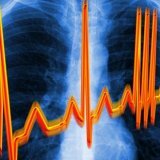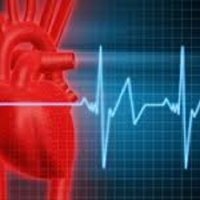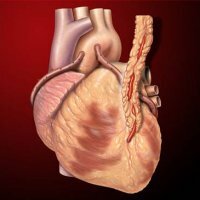Methods of treatment of atrial fibrillation

Atrial fibrillation or atrial fibrillation, is expressed in chaotic atrial contraction( 400-600 times per minute) without coordination with contractions of the ventricles of the heart. This is one of the forms of supraventricular arrhythmia, in which the sinus node loses the function of the pacemaker. Then the role of the frequency filter of the impulses carried to the ventricles lies on the atrioventricular node, which can normally conduct 140-200 pulses per minute. In the case of atrial fibrillation, only a fraction of the impulses reach the ventricles, their contractions are irregular, which resembles a flicker. This circumstance formed the basis for the name "atrial fibrillation".
Methods of treatment of atrial fibrillation are various. For example, antiarrhythmic drugs are widely used, which can give good results and reduce the occurrence of arrhythmia.
Antiarrhythmic drugs are divided into four classes according to the mechanisms of their action:
Class I is a "membrane-stabilizing" remedy. These include compounds that can block the fast sodium channels of the cell membrane.
Subclasses:
- IA - moderately reduce the sodium stream( procainamide, quinidine, ajmaline, praymalin, disopyramide, pirmenol, tsibenzol).
- IB - preparations the maximal effect on repolarization and conductivity( piromekain, lidocaine, mexiletine, trimekain, aprindine, fenotoin, pentikainid).
- IC - substances retarding conductivity( encainide, flecainide, etatsizin, indekainid, propafenone, VFS, nikainoprol, etmozin).The drug ethmosin is sometimes classified as a subclass of IB.
Class II - blockers b-adrenergic receptor, i.e. a compound capable limit neuro-sympathetic cardiac regulation( propranolol, nebivolol, sotalol, metoprolol, timolol, bisoprolol, acebutolol, nadolol, atenolol, esmolol)
Class III - drugs, resulting in a uniformelongation phases of repolarization and increase the duration of action potential( bretylium tosylate, amiodarone( Cordarone), dofetilide, nibentan, ibutilide).
Class IV - blockers of slow calcium channels of the cell membrane. These substances inhibit the depolarization of cells with a slow electrical response( diltiazem, verapamil, gallopamil, bepridil, tiamil).
Another method of treating atrial fibrillation is radiofrequency ablation. The procedure is invasive, in the form of small punctures, but effective. Restoration of the normal heart rhythm occurs by cauterizing a small, precisely calibrated area of the heart with a special catheter.
The use of pacemakers also gives its positive results. This medical device serves as an artificial pacemaker and is designed to maintain a normal heart rate. The pacemaker imposes and then maintains a certain patient heart rate, for example, when the heart contracts is often insufficient( i.e., bradycardia) or holds block impulse conduction between the atria and ventricles, so-called atrioventricular block.
Treatment of atrial fibrillation with monotherapy does not demonstrate the desired results. Therefore, it is necessary to develop hybrid methods of treatment, in which different approaches to the therapy of this pathology are combined. This will significantly affect the various pathophysiological processes in the development and course of the disease. A clear advantage of the hybrid technique is that the simultaneous use of different treatment methods compensates for their shortcomings with each other.
Pacemaker implantation gives doctors a wide choice in prescribing for antiarrhythmic therapy, the ability to use the regimens of the device in the treatment of tachycardia. Another important point is the 24-hour monitoring of cardiac activity in the free access of the doctor and patient.
This enables the physician to select and optimize the therapy according to the received pacemaker indicators, without fear of the side effects of drug therapy.



